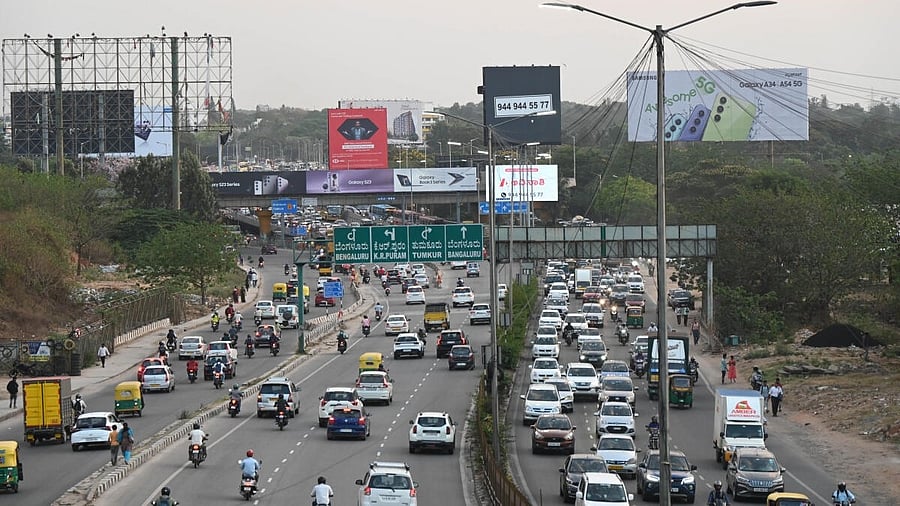
The total cost for the construction of flyovers or underpasses was estimated at Rs 16 crore.
Credit: DH Photo
A recent study by the Institute for Social and Economic Change (ISEC) recommended the construction of a flyover or an underpass in five out of ten traffic-dense junctions in the city as a long-term solution to ease traffic congestion.
The ten junctions picked for the study were Dairy Circle, Kadubeesanahalli, CMTI, Iblur, Silk Board, Goraguntepalya, Kumaraswamy Layout, Tin Factory, Sarakki, and Hebbal junctions. Flyovers or underpasses were recommended in the last five junctions.
Prof Krishna Raj, one of the researchers who conducted the study, said that this recommendation was put forth as a solution in junctions where the volume-to-capacity (V/C) ratio is high. "Other methods to reduce congestion would be the diversion of all vehicles but if that is not possible, this is a technically feasible solution," he said.
The total cost for the construction of these flyovers or underpasses was estimated at Rs 16 crore.
He added that if this was implemented, traffic congestion in those five junctions could come down by 100 per cent.
This was one of the many recommendations that were included in a report submitted to the Karnataka Monitoring and Evaluation Authority, which identifies both short-term and long-term infrastructural, technical, and governance interventions that are required to ease congestion.
The KMEA has directed all the stakeholders to implement these proposals.
Besides pointed recommendations for each junction, the report calls for improved footpaths, elevated skywalks, and enhanced bus fleets. Prof Raj also highlights the need to reduce metro fares and the introduction of a mobility card.
"Bus stands near the junctions need to be moved ahead a little to avoid traffic hold-ups. Signal timing has to be synchronised and integrated according to the volume of traffic and wherever possible, traffic has to be diverted to reduce load," he said.
Nearly 20-25 per cent of the city's congestion can come down if these short-term proposals are implemented correctly, he added.